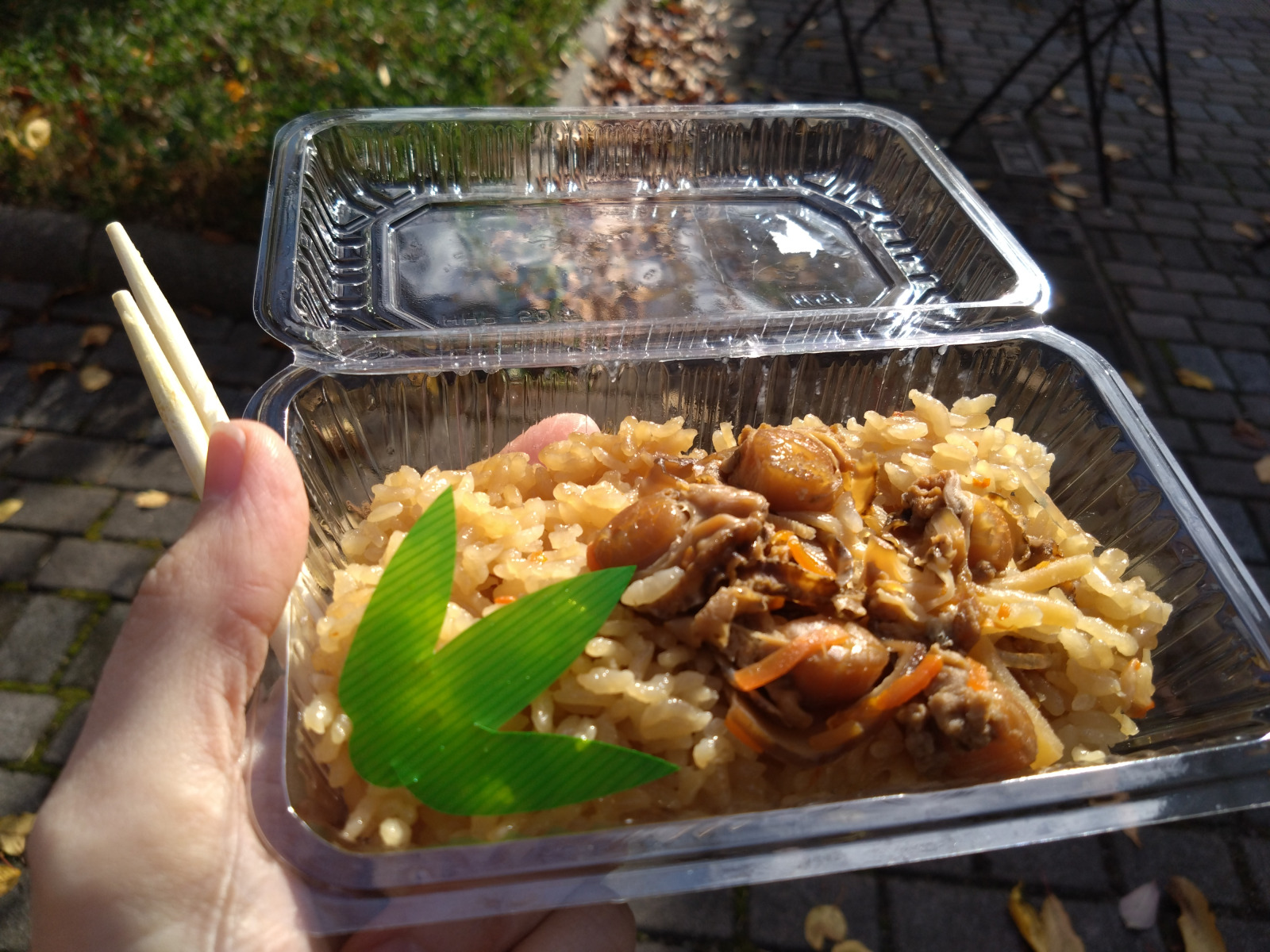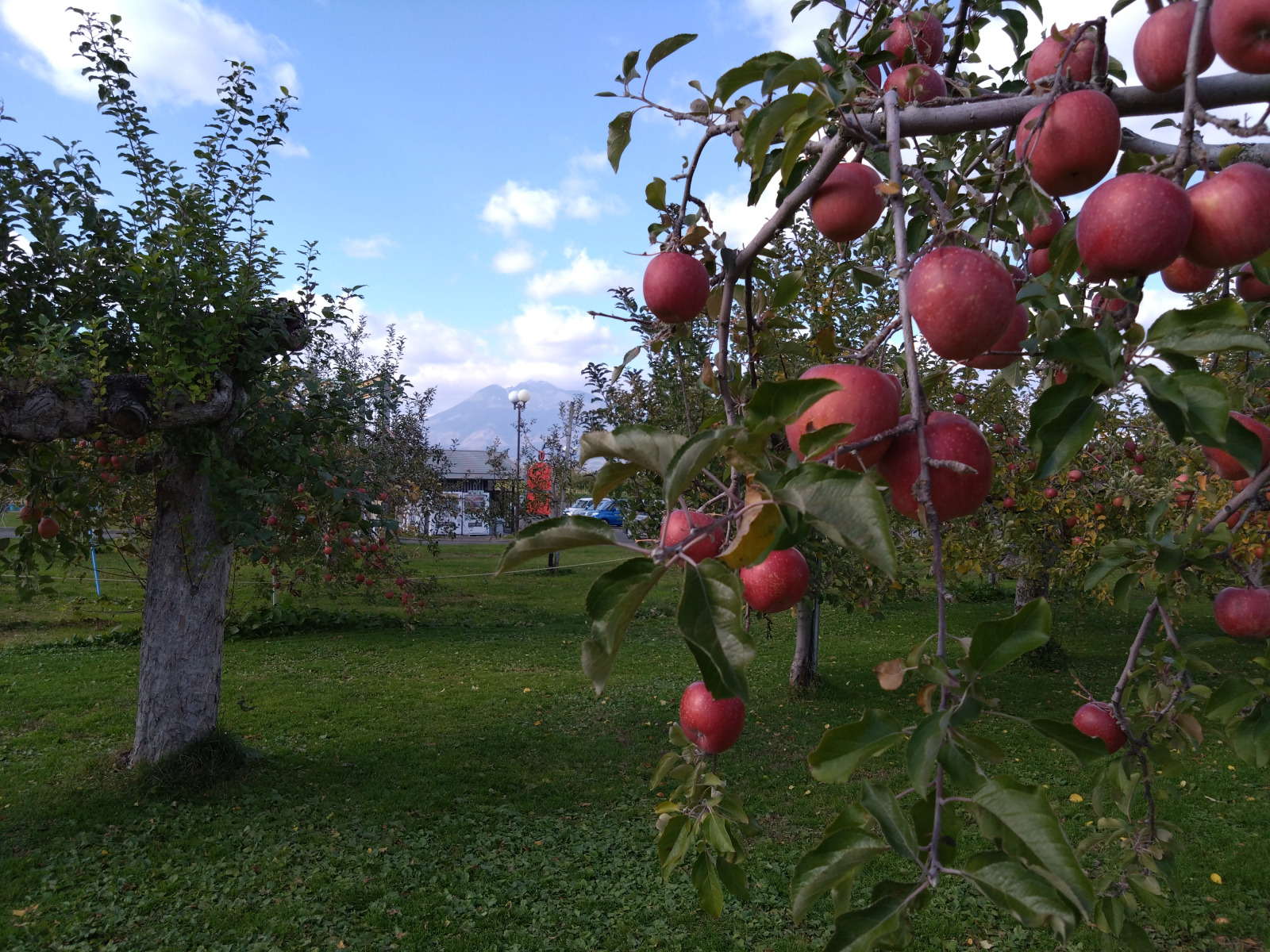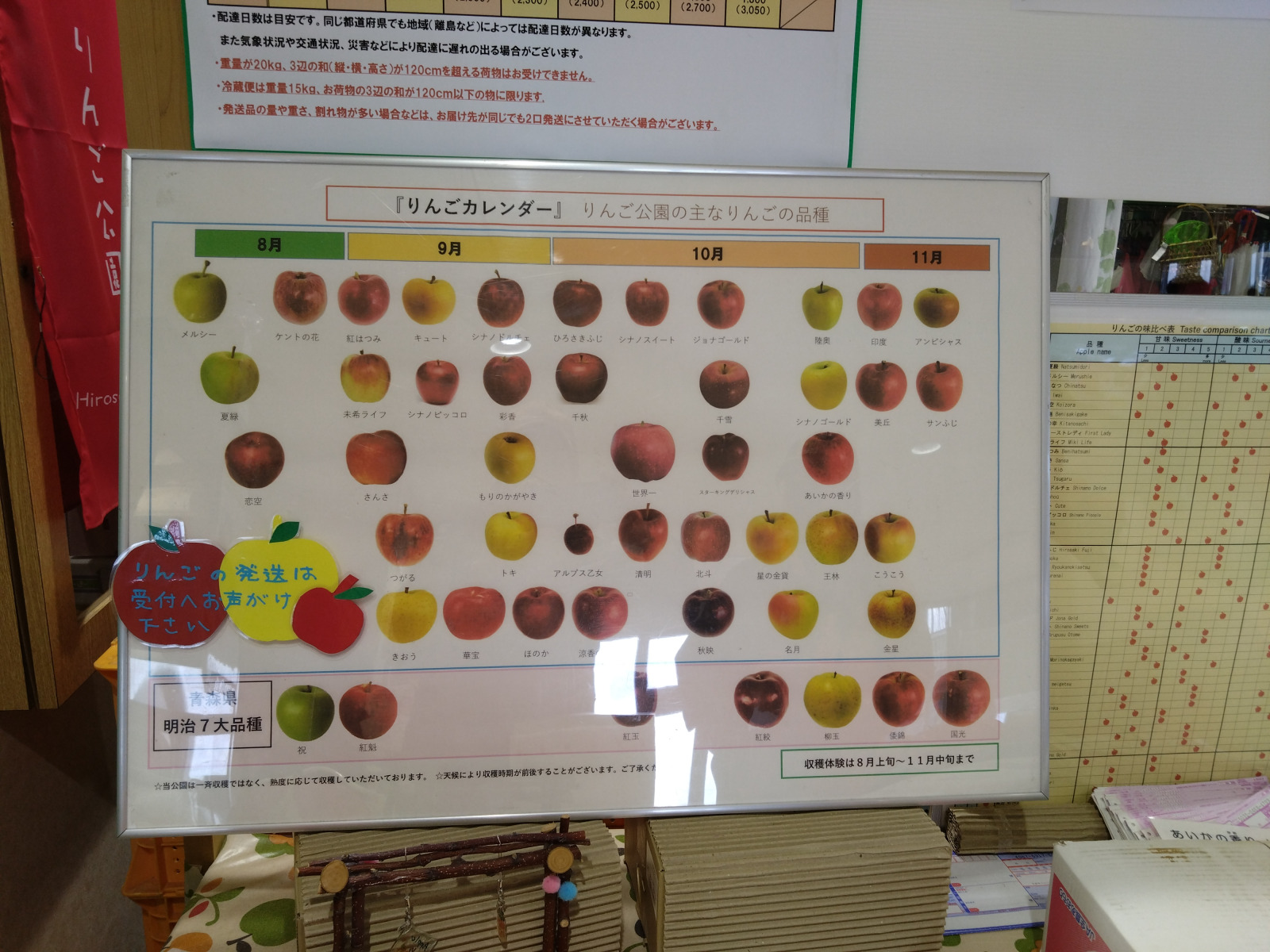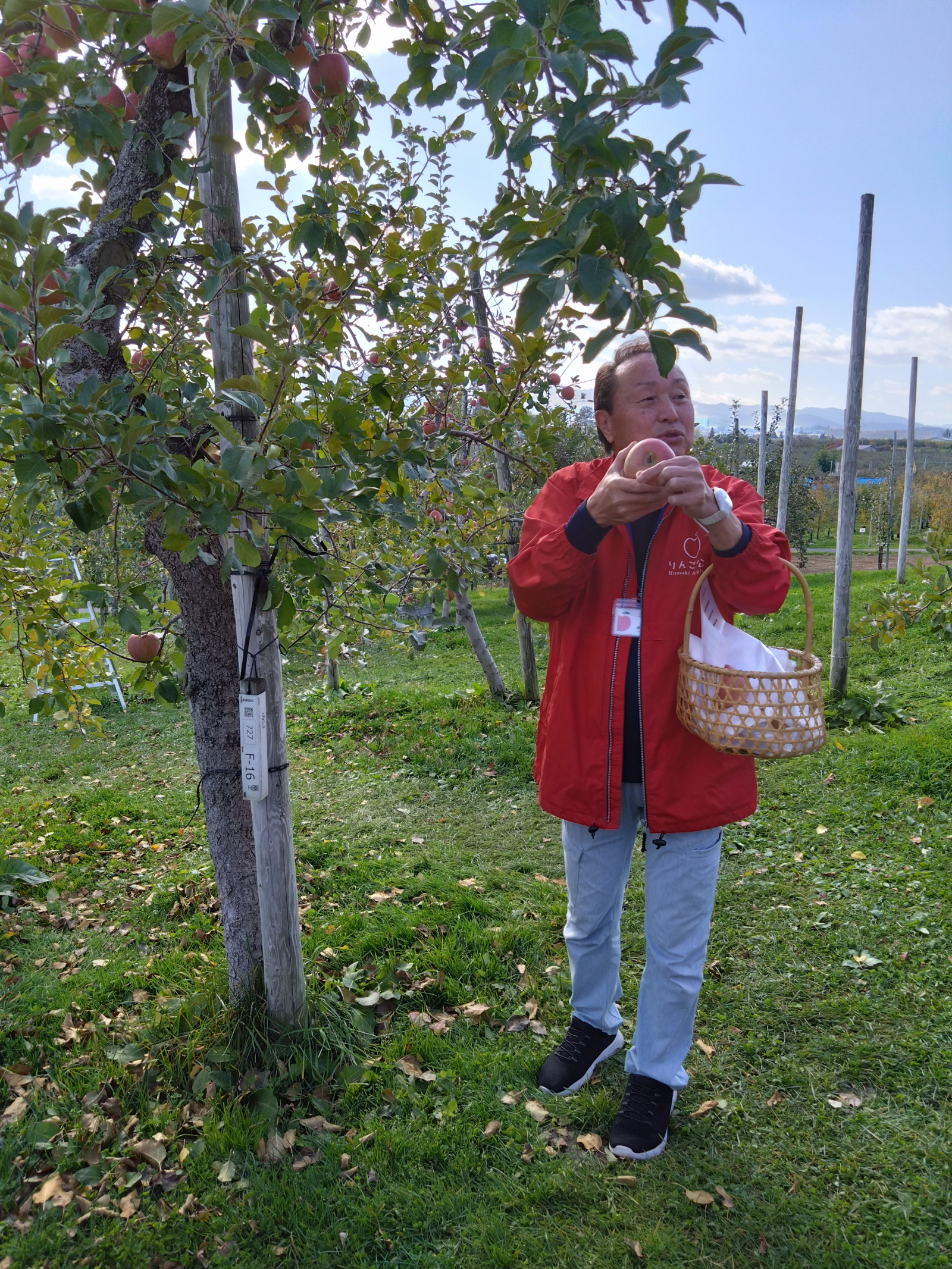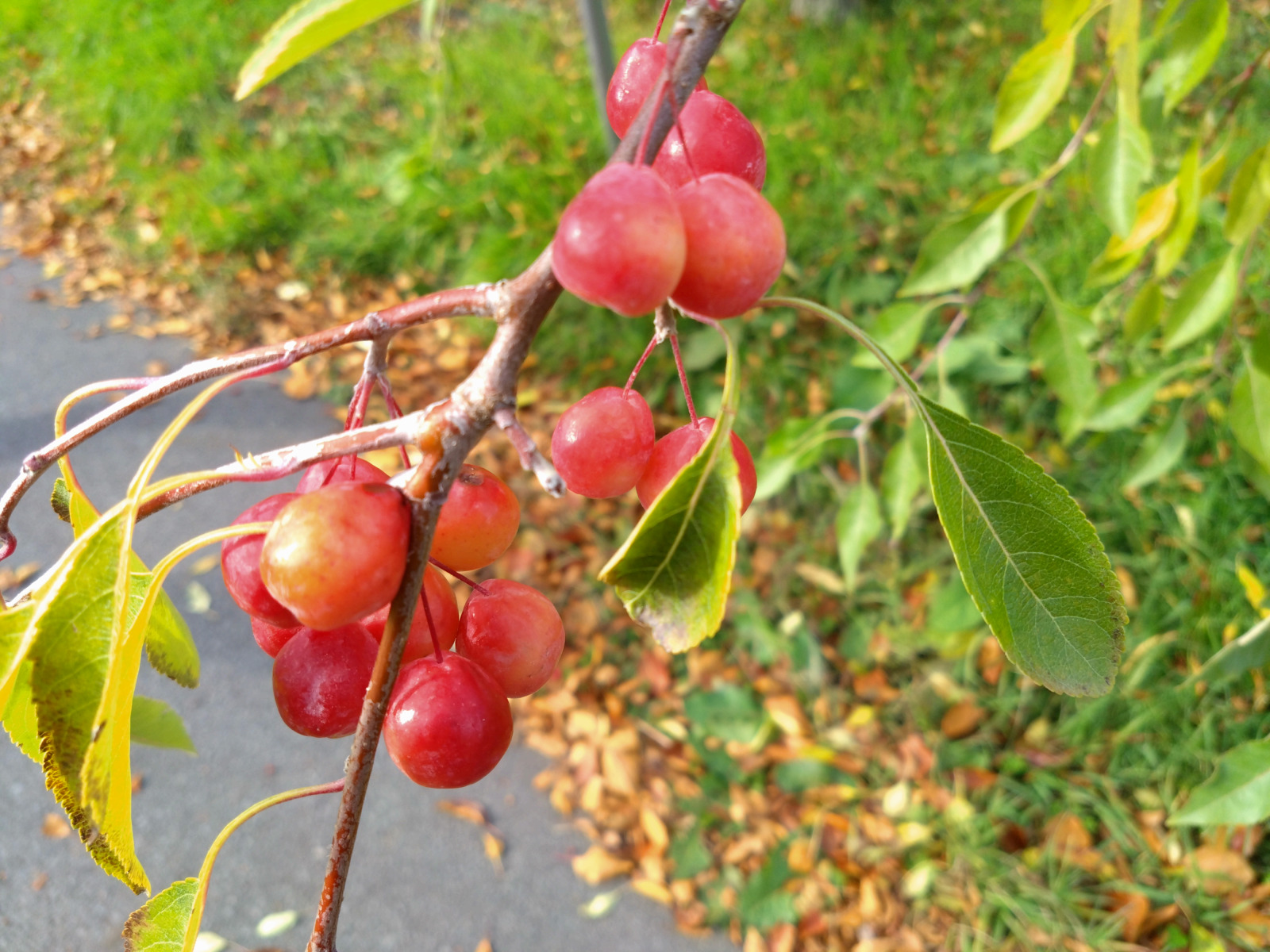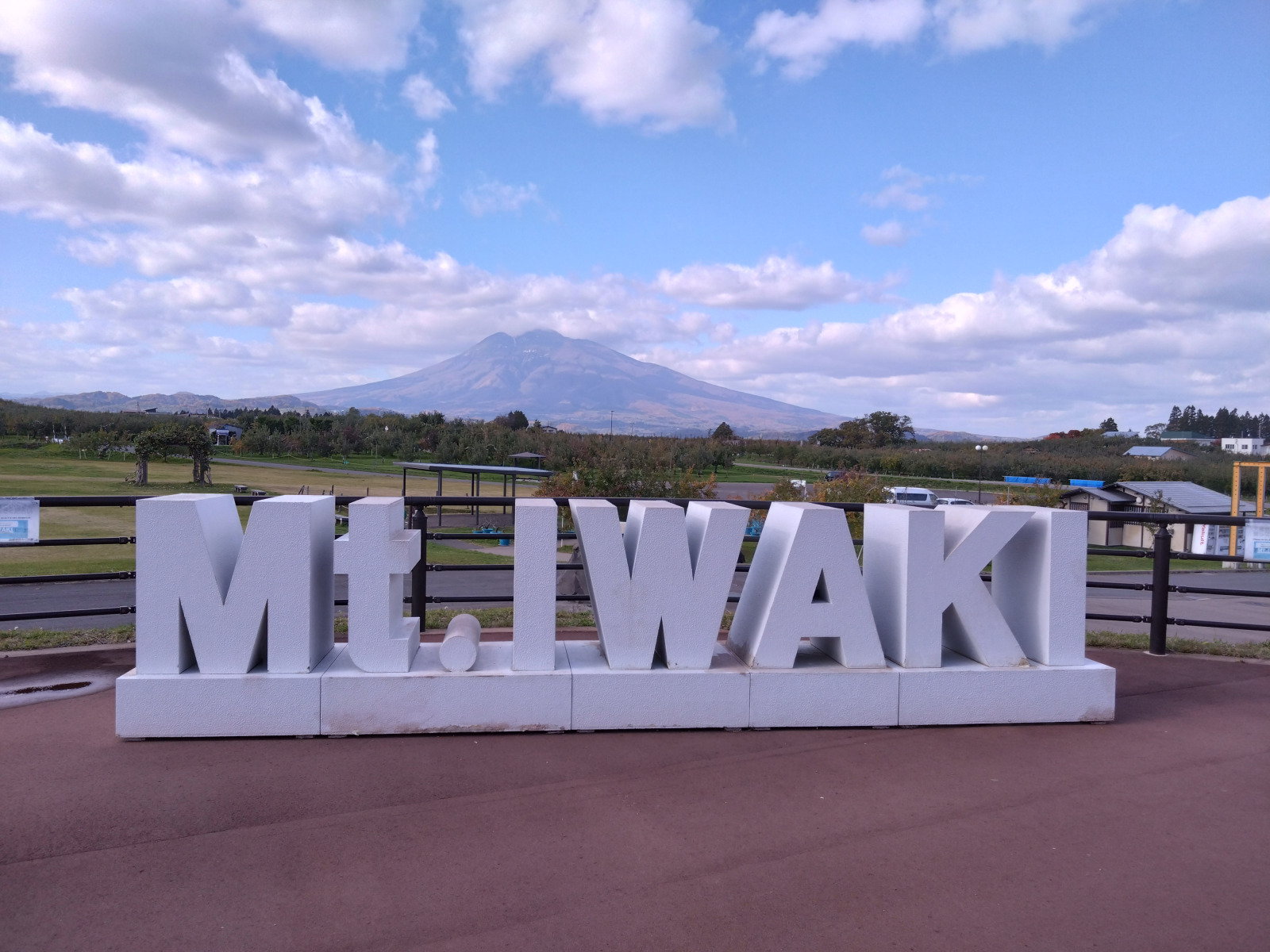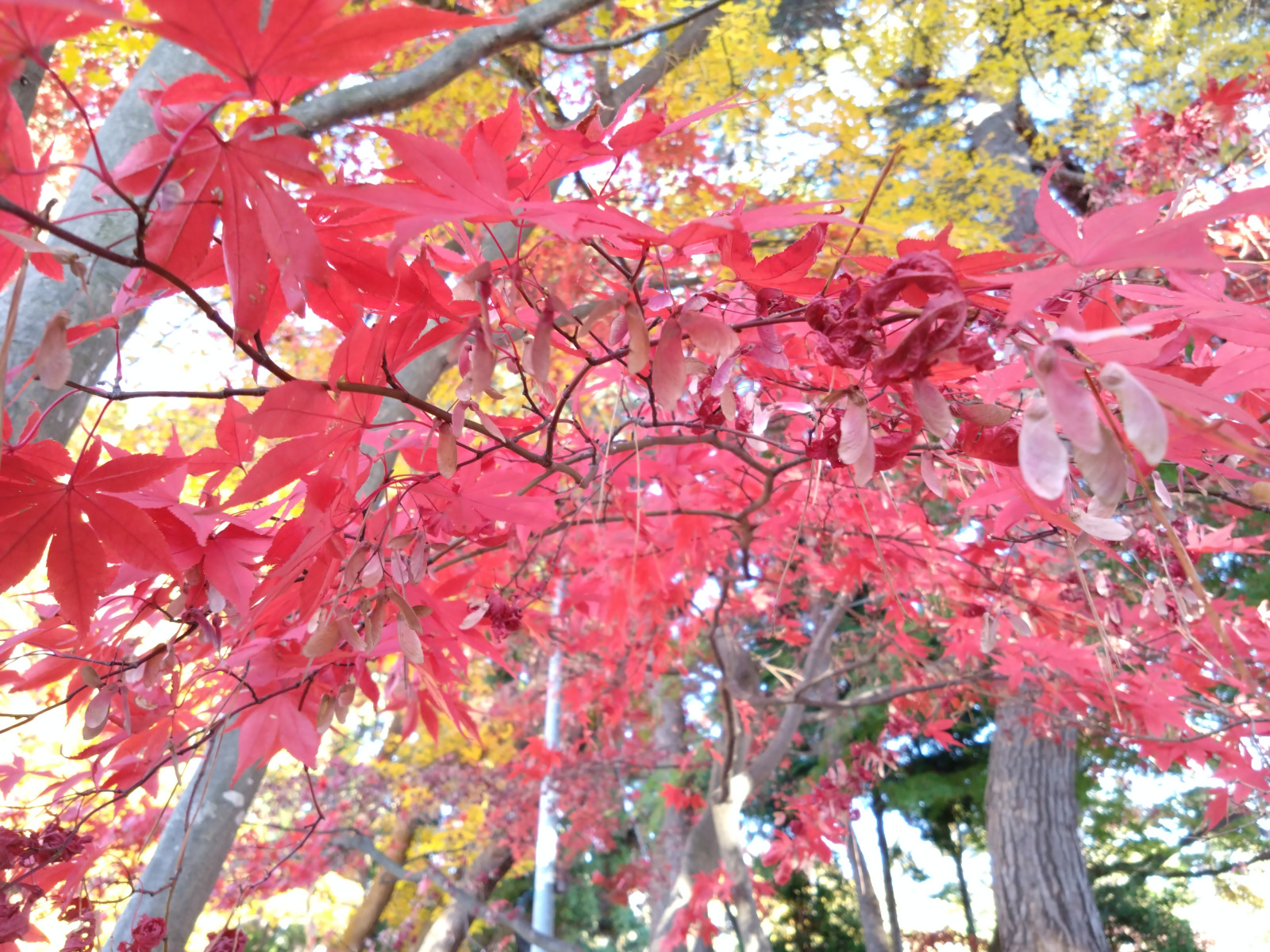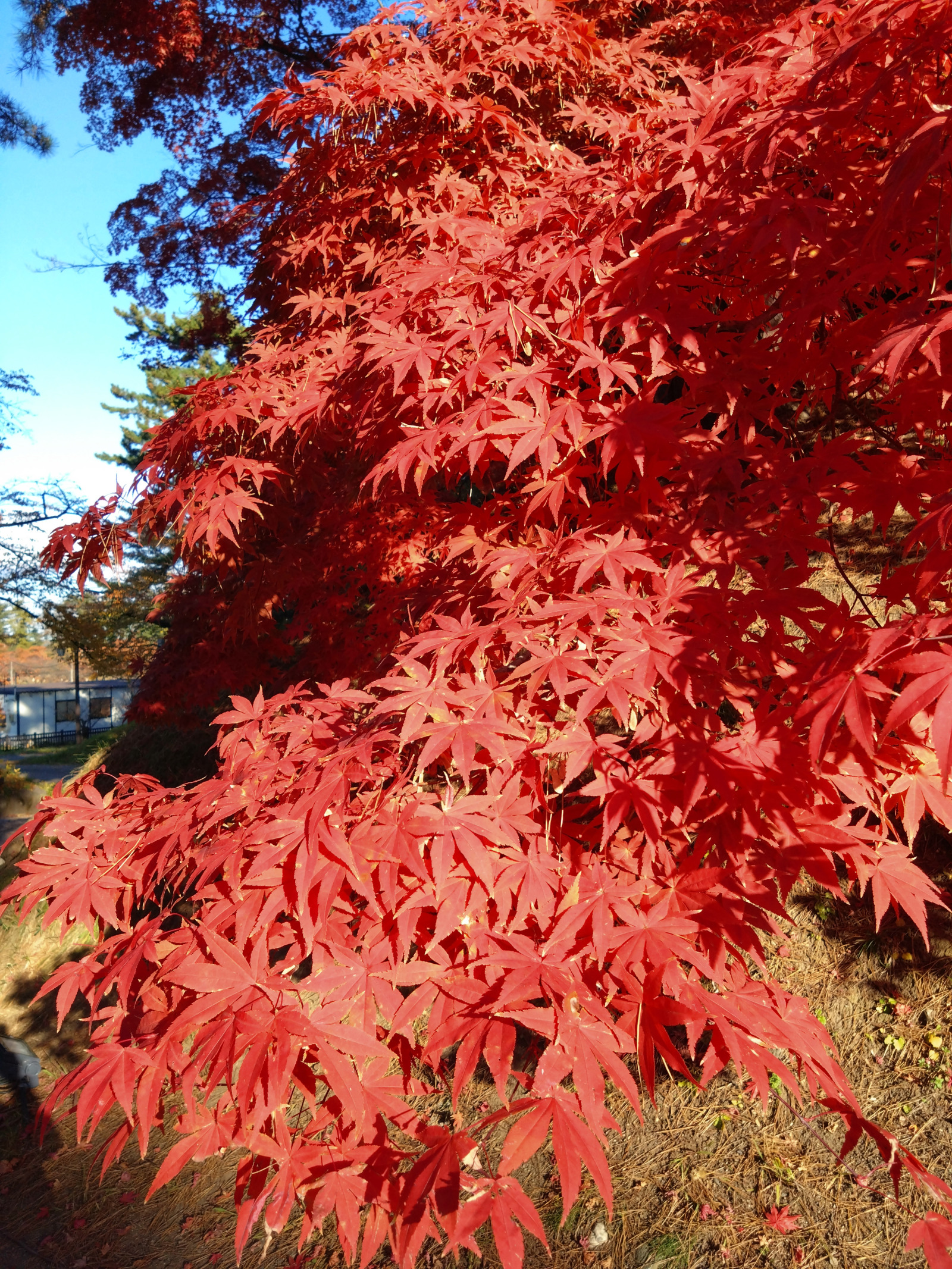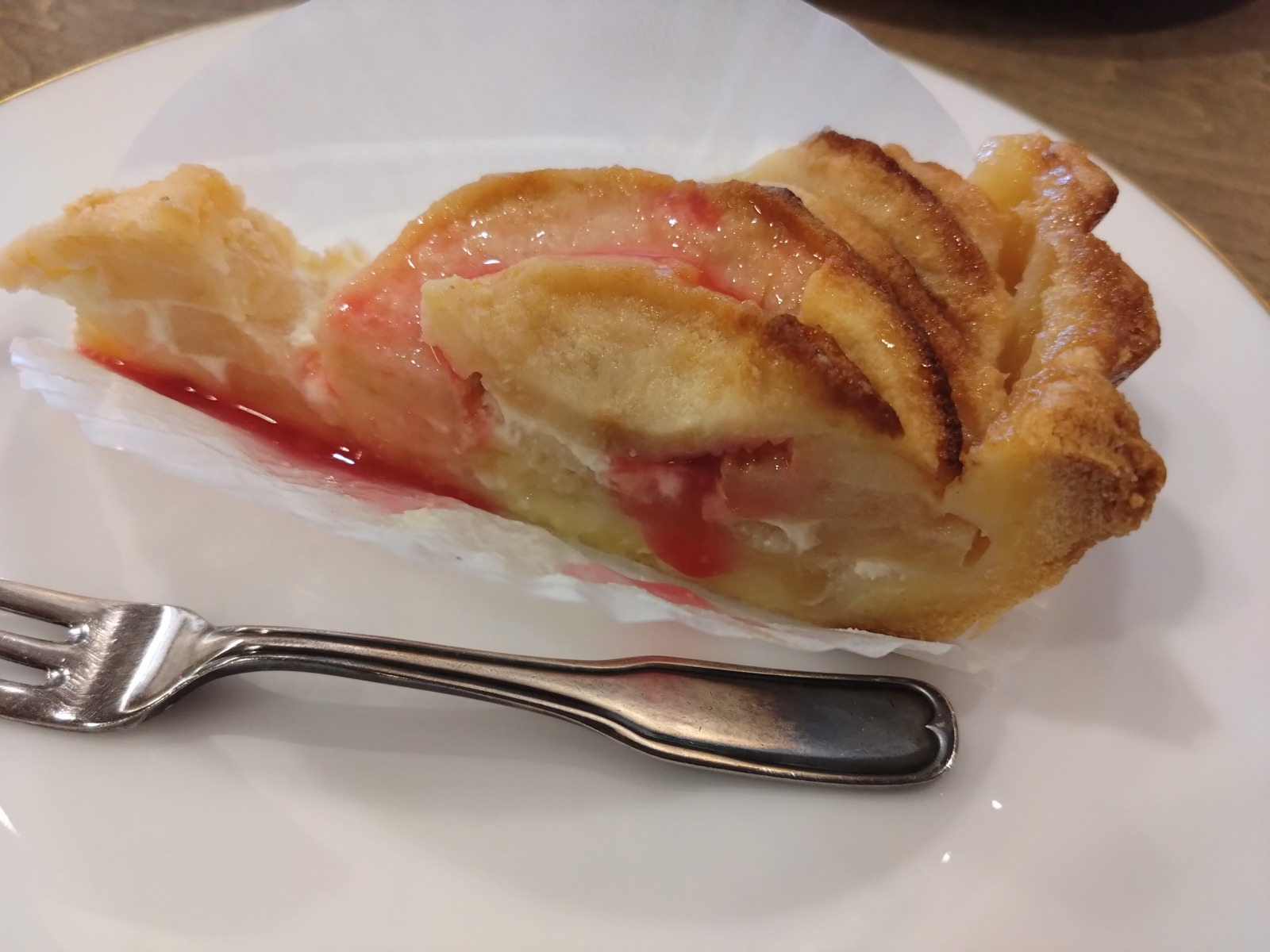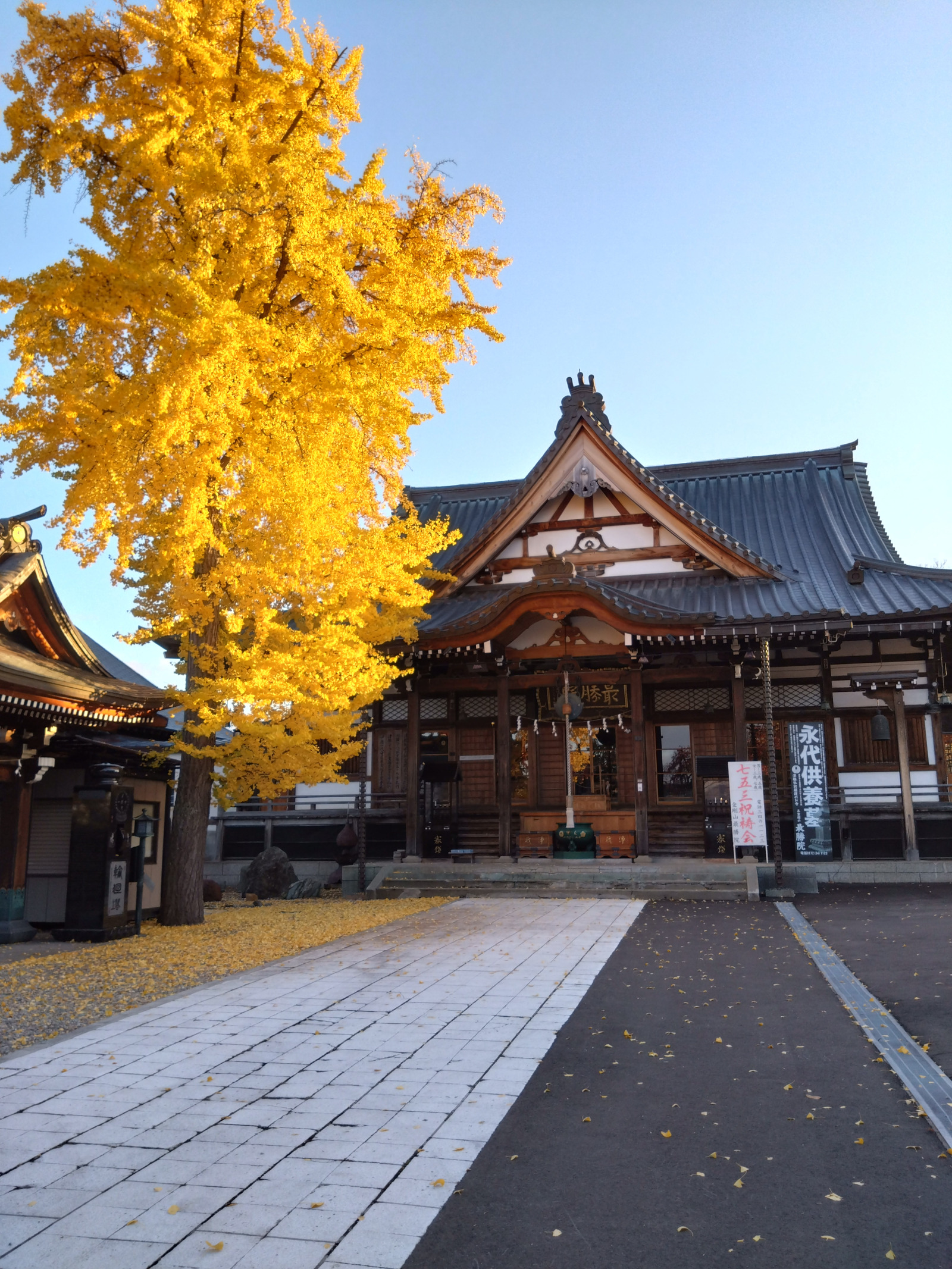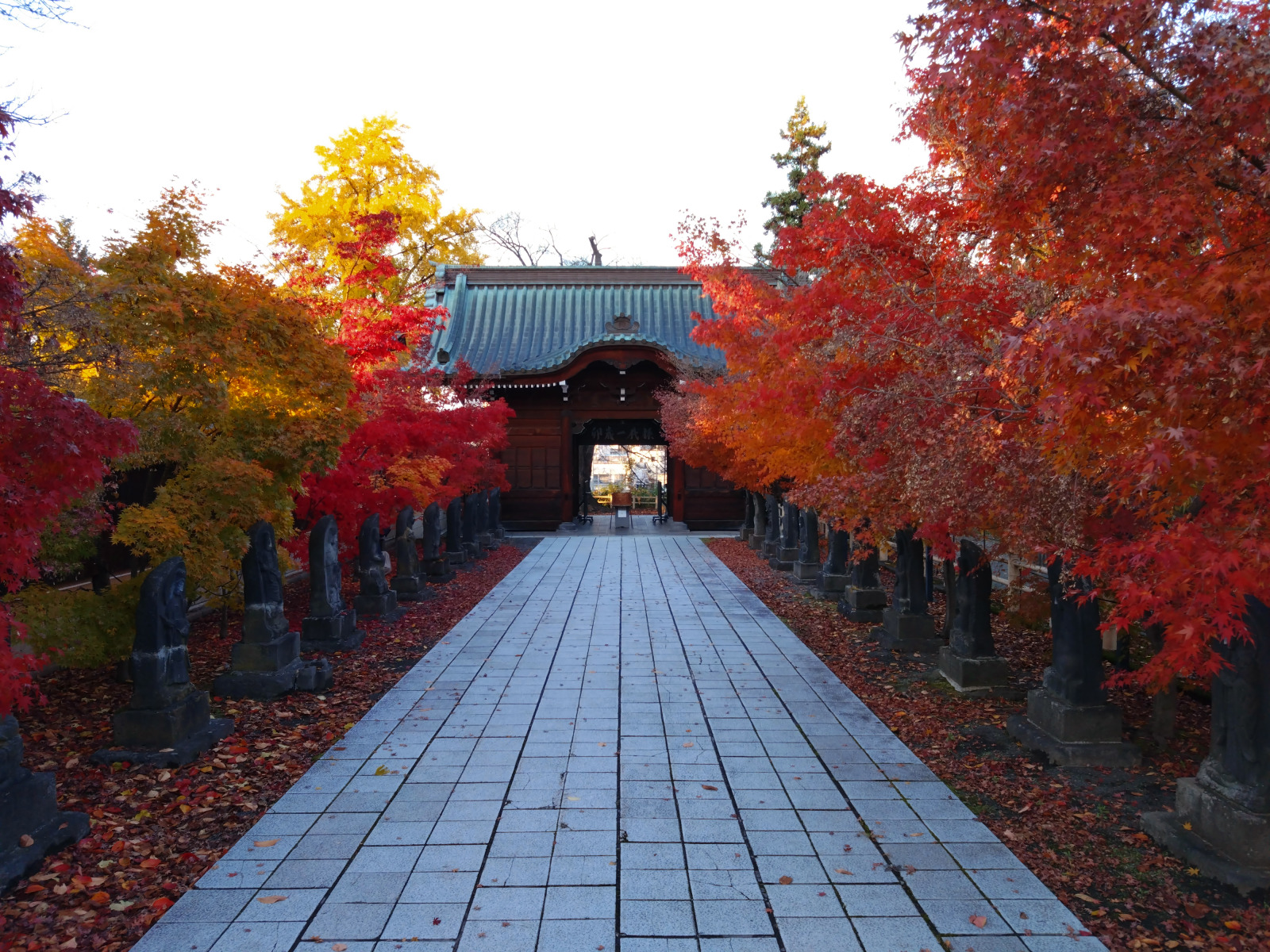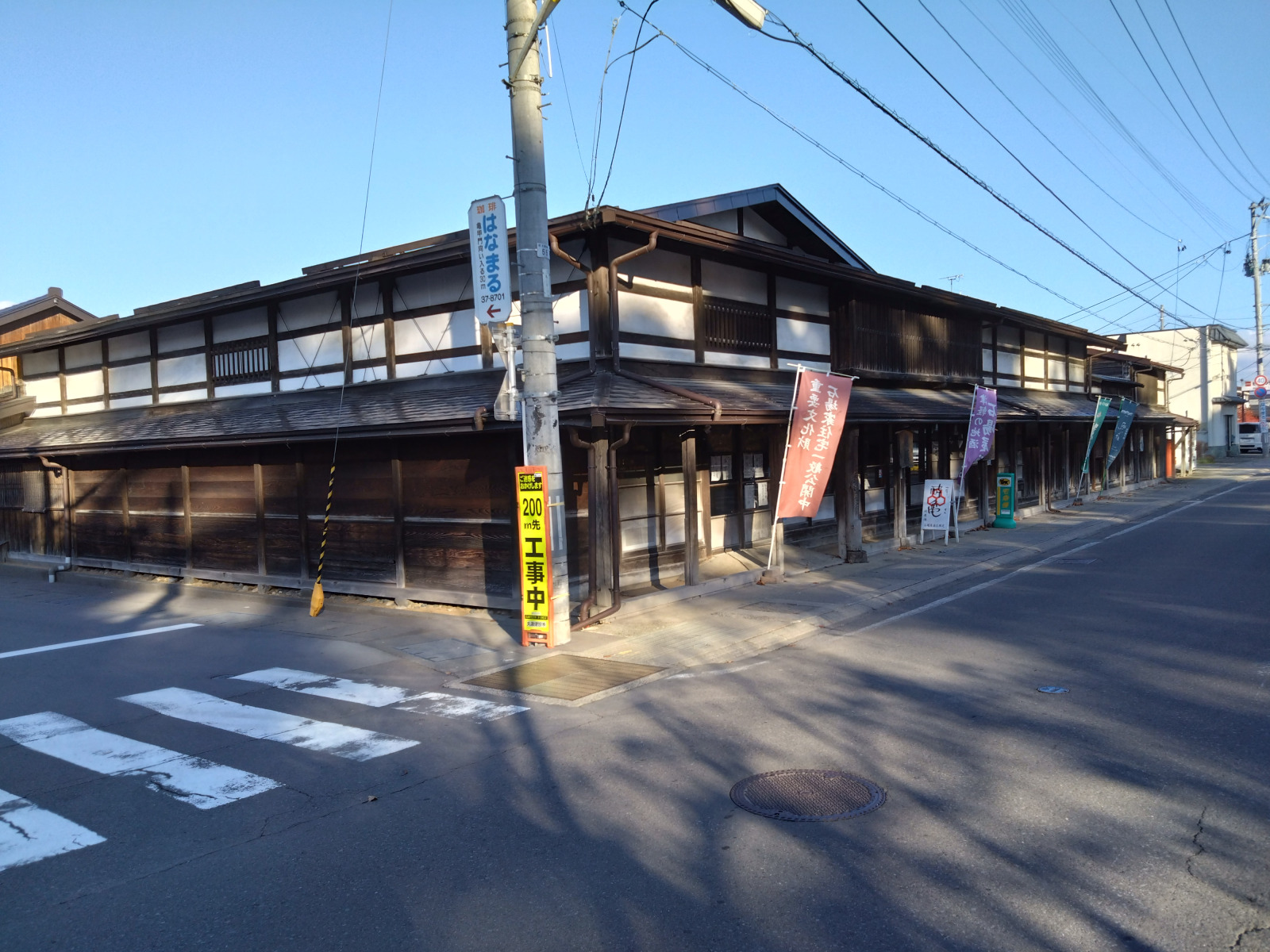Travelogue: Enjoying the Colors and Flavors of Autumn in Hirosaki
By Lillian Androphy

Hirosaki, Aomori’s castle city, is a popular destination in spring thanks to the thousands of cherry trees that bloom in the park surrounding Hirosaki Castle. However, the city is also well worth a visit in autumn, when its scenery is adorned with leaves in fiery shades of scarlet and yellow rather than pale pink and whitish blossoms, and apples—Hirosaki’s most famous product—are in season.
Hirosaki is said to account for about a quarter of the total production of apples in Japan, and when I exited JR Hirosaki Station on a mid-November morning, one of the first sights to greet me was an unattended produce stand selling apples of numerous varieties, along with local garlic. Customers deposit the price (exact change) into the coin box, and security cameras ensure their honesty. I would stop by here later to purchase some souvenirs before my journey home.
Since I was famished but didn’t have enough time for a sit-down meal before the next scheduled bus, I roamed the area around the station in search of convenience stores and discovered a hidden gem: a fresh food market called “Rainbow Mart” that also sells various prepared dishes in the mornings. Scallops being an Aomori specialty, I bought deep-fried scallops that were the largest and juiciest I had ever tasted. The rice cooked with scallops was also delicious, the scallops adding a rich umami flavor to the slightly sweet broth.
With my appetite temporarily sated, I boarded the bus for my first destination: Hirosaki Apple Park. This sprawling park on the outskirts of the city is home to as many as 2,300 apple trees representing about eighty varieties. Bright-red apples gleaming tantalizingly in the autumn sunlight dotted the orchards as Aomori’s sacred mountain, Mount Iwaki, loomed in the distance.
Before trying out apple picking in the orchards, I explored the park’s grounds, which include the Former Osanai Residence, a reproduction of a historic farmhouse with old farming equipment on display. It was also hosting an exhibition of sliding-door paintings of beautiful women, painted by one of the same artists who decorates the floats for Hirosaki’s famous Neputa Festival.
At Hirosaki Apple Park, visitors can pick their own apples from around the beginning of August to mid-November every year, so I had arrived at the tail end of the apple season. About forty varieties of apples can be picked depending on the day, with the one available today being “Sun Fuji,” described as having a very crispy texture and a good balance of sweetness and tartness. Apple picking groups are led every half hour, and the experience itself is free, although you must purchase any apples you pick (charged according to weight).
First, our guide gave us a few helpful tips and pointers: the reddest apples will have the sweetest taste, as this indicates that they have received the most sunlight, and the easiest way to pick the apples is to grasp them by the bottom and flip them over. Ladders were available to help us reach the apples located on higher branches near the tops of the trees.
After picking my apples, I brought them inside the facility to be weighed and make my purchase.
The next item on my itinerary was strolling through Hirosaki Park and taking pictures of the beautiful fall colors. Ranging from dark, rusty red to crimson to ochre to bright yellow, the leaves created stunning scenery in juxtaposition with the castle’s structures, especially when reflected in the moat.
The park’s grounds were vast and quiet, and I felt totally immersed in nature as I spent over an hour exploring.
However, the brisk autumn air left me desiring a bit of a pick-me-up, and I decided to take this as an opportunity to visit one of the cafés for which the city of Hirosaki is famous. (You can read more about the unique history of coffee in Hirosaki and the city’s rich café culture here.)
Located very close to the perimeter of Hirosaki Park, I found Café Buruman, an incredibly charming coffee shop with a cozy and retro atmosphere. When you enter the café, the first thing you’ll notice is the wall of exquisite chinaware cups and saucers behind the cypress-wood counter. These items were made by Okura Art China, a purveyor of fine chinaware to the Imperial Household Agency and state guesthouses as well as first-class hotels and restaurants, and many are no longer even in production.
After ordering a café au lait, I also decided to sample the apple pie and apple tart from among the several varieties of homemade pastry available that day. For those who would rather avoid caffeine, the menu also features apple juice (served hot or cold). In addition to the gorgeous chinaware in which the coffee was served, hand-stitched Kogin-zashi coasters added a touch of Aomori tradition to the table.
Feeling reenergized, I now continued on to the next stop on my autumn foliage tour, Saishoin Temple. This temple is famous for its five-storied pagoda, which was built in 1667 without using a single nail and is considered to be the most beautiful pagoda in the Tohoku region. The vermilion-painted pagoda building was beautifully accentuated by the colorful autumn leaves, and the other temple structures created lovely scenery as well. Like Hirosaki Park, this temple is also a popular location to view cherry blossoms in the spring.
While walking through Hirosaki City, one thing that stood out to me was the diversity of its architecture, ranging from the traditional Japanese style of the former Ishiba Residence, a historic merchant building originally constructed during the eighteenth century, to the ornate Renaissance-inspired grandeur of the Aomori Bank Memorial Hall, built at the very beginning of the twentieth century when Hirosaki, and Japan in general, was enthusiastically incorporating Western cultural influences. The Hirosaki Museum of Contemporary Art, an early-twentieth-century brick warehouse building that used to serve as a brewery, is another architectural highlight.
I’m sure that the city of Hirosaki offers unique and delightful charms in every season. However, it’s only in autumn that you can see it decked out in colorful leaves and taste its famous apples freshly picked from the orchard. Filled with nature, food, culture, and history, this concluded my perfect autumn day in Hirosaki.




